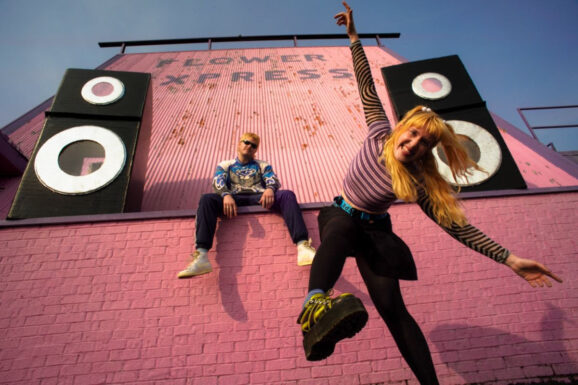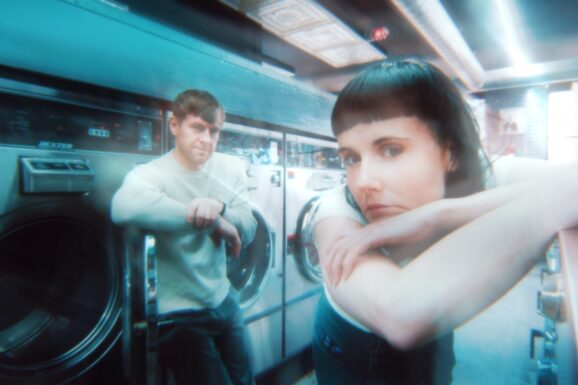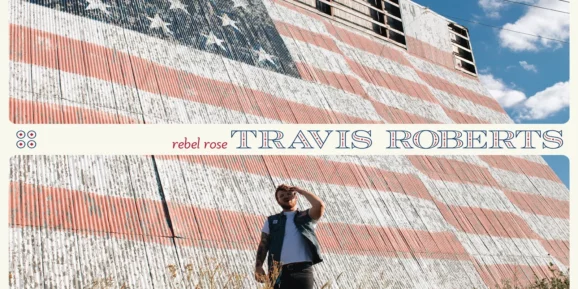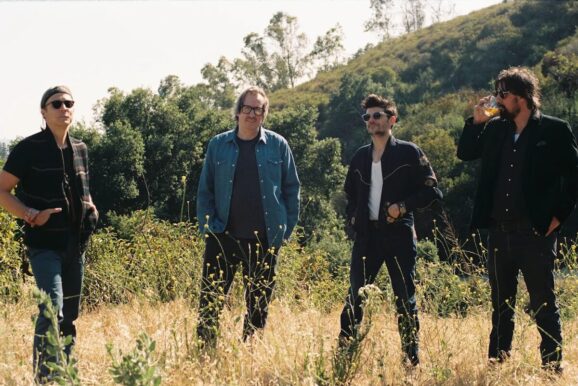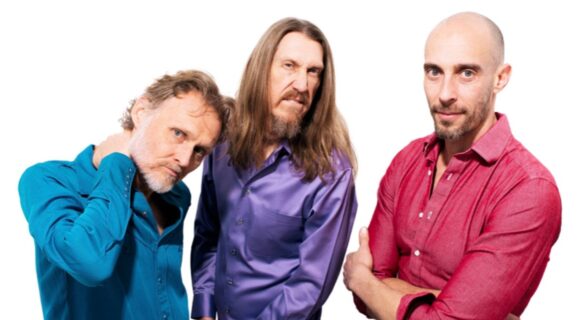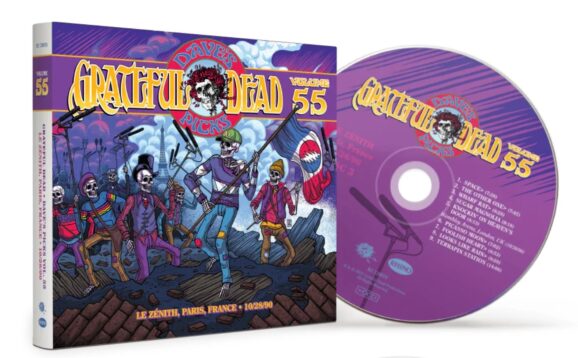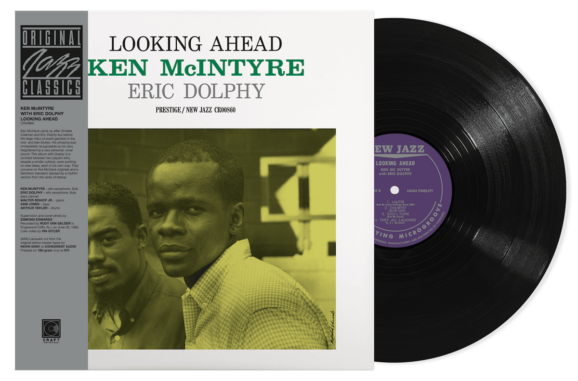Philadelphia-based Eliza Hardy Jones is a full-time member of The War on Drugs, has been in Iron & Wine and Grace Potter’s touring bands, and has also been a vocal coach/performer on The Philly Specials (members of NFL’s Eagles) holiday albums. Very recently, she released her new solo album, Pickpocket, which arises from a very difficult period in her life and, conversely, also has all the trademarks of a very intimate collaboration with many dear friends. The combination of intensely crafted composition on Hardy Jones’ part and a slew of excellent collaborators makes for a very maximalist sound on Pickpocket, as rich as it is deep.
Eliza Hardy Jones has been open about the very personal subject matter that informed these tracks, most of which were written without the certainty that they’d ever be released, including struggling with infertility for a number of years. Remarkably, her story’s happy ending in becoming a parent puts the songs in a new context for the artist, and her decision to collaborate with others and release the album is much more triumphant. While the songs on Pickpocket can be seen in the context of Hardy Jones’ own experiences or easily universalized to encountering grief and changing identity, her commitment to conveying emotion in a nuanced way shines through. I spoke with Eliza Hardy Jones about the changing landscape of her life and her music during the making of Pickpocket.
Hannah Means-Shannon: Was this an album that came together over a longer period of time, or one where you had a fixed period of time to work?
Eliza Hardy Jones: Instead of sending a song to someone and saying, “Can you send me a bass track?” it was, “Hey, here’s this track.
What do you think about it? Maybe send me a bass track in a month or two? No big deal…” [Laughs] It was a slow process as it all came together. I think part of it was that I was writing it from a more personal place rather than a professional place. I just wanted to record these songs, and hopefully make something beautiful, but I wasn’t making it in the same way that I’ve made other records.
As an independent artist, I’ve always been doing things on my own clock, but because I work as a touring musician, I’ve been someone who booked studio time and said, “We’re going to go in, and we’re going to make this happen!” With this, it was way more like, “I’m going to go into my studio, and I’m going to work on this.” Or, “I’m going to go into my studio and work on some quilts.” Or, “I’m going to hang out in the woods for a few days.” It was a much more relaxed and spacious way to make a record.
Did the time off the road as a touring musician help with that approach?
I was certainly writing more during that period, though I didn’t start in earnest until things were back and rolling. During that time, I was going through fertility treatments, struggling with my infertility, and coming to terms with it. Eventually, I found myself able to get pregnant, but I wrote the record in that space of trying to figure out what was wrong with my body and deciding how to address that.
Writing the record was happening a lot around that. I was writing as a response to what had happened. It was a contemplative space. It was, “How do I manage how I’m feeling about this? Let me just try to sing a few bars about it.” Sometimes, I would then have to take a long break from that song before I could come back to it. I was trying to write, honestly, for myself. I did not necessarily think that I was making a record with these songs.
I was wondering about that because even people who are very sharing with the public hesitate, when it’s a very personal subject, about whether they will ever share it.
I definitely have those moments. [Laughs] I’m glad that it worked out the way that it did. I didn’t write the songs for anyone to ever hear it. There were several times when I thought, “If I release this song, I can just change the lyrics.” That way, I gave myself permission to be more personal and more emotional. That was really liberating in a lot of ways. By the time I was ready to finish the songs and have things mixed and mastered, I felt like, “No, this is what the song is.” I felt empowered by saying, “I’m just going to let people hear how I was feeling.”
That’s very brave. I’m sure the alchemy of time and working with other people contributed to that, too.
A big part of it was that when I wrote the songs, I was coming to terms with the fact that I would not be able to become a parent, and writing the album was a way to make peace with that. Then, I had a dear friend of mine offer my husband and me a donor embryo, so I was able to get pregnant and have a baby, so I do have a son now. That recontextualizes the record. There’s a cushion here that makes it easier to share. I was less worried about whether this album was going to break my parents’ hearts. But now, I know that it’s okay.
I hadn’t even thought about how that might impact family members! That’s a big deal, too.
There’s one level of letting the “public” in on your life, but they are not actually in your life. You hope that the lyrics become about their lives. But the other piece of it is that the people who love you or who care about you the most might hear things in those songs that might be really painful. You don’t want them to feel that way. Having a version of a happy ending makes it easier for me to share it.
When you were sending tracks to your friends to collaborate, presumably, it was a less certain outcome. What did you usually send them?
Yes, that’s true. I would build the songs up a lot. I would reach what I could accomplish without drums or without a bass, or I would program garbage midi drums. I was always sending them full songs, but going through fertility issues is not something you often share with other people. Because we had gone through many years of this, and I had kept it secret for so long, sending tracks to friends was often the first time I was telling them what was happening. When they heard it, it was like my way of sharing with them my experience of the last few years.
It could be, in some ways, the most accurate way of sharing it for you.
Yes, definitely. And I didn’t have it in me to write long e-mails or tell them. It was such an exhausting process. Part of keeping it a secret is not to keep it from people but not having the energy to say it out loud. [Laughs] And everybody on this album was a close, dear friend. It was, “This what’s been going on. Want to play some synthesizers?”
That must have been quite an experience getting the tracks back from friends. Did that introduce some positivity for you?
I definitely could not have made this record on my own, not only because I can’t play the drums, but because hearing someone else’s perspective on it would then unlock a new door for me. Then, I would be able to go deeper into the Production side of it. Hearing the drum part or guitar part would unlock my brain, and I would think, “I’ve got to move this part. And this part needs to be layered.” It would really unlock some doors for me creatively, which was so helpful.
These feel like big songs. It sometimes feels like 100 people have contributed to the intensity and layers. I know a lot of that is you, but it’s a maximalist record!
It is very much a maximalist record! I think part of that was just because I had the time to keep going. I could keep going until I truly believed it was done. I think I’m a maximalist at heart in the way that I make art. [Laughs] I really credit Nick Krill, who mixed the record. He’s so incredibly skillful at carving out space for all of those things.
I think the trick with all of the layers is that sometimes you just end up with a mess, you end up with mud. I’ve worked with Nick Krill for over a decade, and we intuitively understand each other. I knew that it was not going to be too much because Nick was going to be able to find these spots for everything. There were also times when Nick would say, “It looks like we need to drop this keyboard line.” And we trust each other enough for me to say, “Yes.” Nick is the mix engineer but also my Production partner.
Despite this being such a personal record, I am not invested in my ego in it. If somebody I trust says to me, “Hey, I don’t think this works.” I am going to say, “Let’s think about that.” And maybe I disagree and think it does work, but I also might say, “You know, you’re right?”
I think there’s a willingness in these songs to go pretty far off the beaten path of traditional song structures at times. What I really want to ask about is tempo. You allow a fair amount of discursiveness. There are songs where the tempo changes a few times, right?
Yes. When you’re working on your own or even playing live, there’s always a fluidity to tempo. But when you’re doing remote overdubs with people who live in other states, you can’t just hand them the track. What I tried to do in these songs was capture the idea that there are tempo shifts.
“Fall To Pieces” is one that has really wild tempo shifts. I did that by making a very, very extreme tempo map. There is actually a click for the whole song. When I sent the drummer the track, I was able to say, “Here’s the click. And here’s the tempo map. Here’s where all the changes happen.” That was so that they could understand it intellectually, and then when they played, they could come from a place of ease and emotion and not just be wondering what was going on.
For me, it’s so important for the songs to feel alive, like they are breathing and moving in a natural way. I do that by going the backroads route of making this very, very intense and rigid tempo map. Then when you turn that off, you’re hearing this very open, breathing organism that can change tempo and time signature.
I can see how it is like a scaffolding, and once you take that scaffolding away, you have this sculpture that looks very organic. Does this album take you further down that road than before?
That’s an interesting question. I think I’d have to be further down the road for me to say that. I feel like I’m too in the songs to have a sense of how far I’ve gone. [Laughs] It’s hard to have perspective, but I definitely really tried to do new things on this album. I wanted to do things I had never done before.
Regarding “Fall To Pieces,” could you tell me a little bit more about the flip that happened between the piano and the vocals for you? I saw in the liner notes that something unusual happened for you, and I can hear that it’s unusual.
I wrote that song, actually, for a live performance. That one was written for a friend who has a dance company because she asked me to write something as part of a cabaret performance. So I knew that it was just going to be piano and vocal as I sang the song and played the piano. I wrote this very complicated piano part that had all these major tempo shifts and modulations because I thought that would be a fun thing to do for a dance performance.
Then, when I started to pull together songs for this album, I wanted to include that song. When I started to work on it as a recording, it was this really intense piano part, and I really started to hate it! [Laughs] I think it probably worked fine live, but as a recording, it was so busy and so aware of itself as a complicated piano part. I felt like, “You know what? Maybe this song doesn’t belong here.” I was not having fun with it.
Then I just muted the piano track and looked at all the other layers that I had been starting to build around it. Then, it just felt open, airy, and beautiful. So I thought, “Okay, no piano, but what then gets to be the core instrument?” Since the piano had been the core instrument. I sampled my voice into a synthesizer, singing a straight tone. Using a portamento, which connects two notes by creating a slide, you can control the speed of the slide. I used my voice as the synthesizer sound, then the voice could move through the chords. That became the instrument for the song.
The song starts where you just hear that eerie vocal sample, and then it swoops and swoops. Once I did that, it totally unlocked the song for me. I sent it to my lifelong friend Brandon Beaver and said, “I need some guitars for this.” I sent it to my friend Severin Tucker and he sent back some super-unique extra synth parts. Matt Musty played the drums. Getting the drummer to play last to a tempo-mapped piece was something. I was very impressed. [Laughs] It sounds like we did it live, but we did not!


